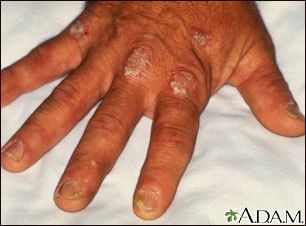
New research has linked children with psoriasis have an increased risk of overweight and obesity.
Psoriasis is a common skin condition that causes irritation, according to the U.S. National Library of Medicine.
The findings were published by Archives of Dermatology and the researchers examined over 400 children with psoriasis and 205 control children from nine countries over 18 months.
The authors said that adults with psoriasis have an increased risk of obesity, myocardial infarction, stroke and diabetes mellitus and that recent studies also suggest the association of psoriasis with obesity in children."
Researchers observed the association between excess body mass index percentile and waist circumference percentile and waist to height ratio with pediatric psoriasis severity.
Researchers fond that excess adiposity occurred in 37.9 percent of children with psoriasis vs. 20.5 percent of children in the control group, but did not differ by psoriasis severity.
Waist circumference above the 90th percentile occurred in 9.3 percent of children in the control group, 14 percent in the mild psoriasis group and 21.2 percent in the severe psoriasis group, internationally.
"Children with psoriasis internationally, regardless of severity, are more likely to be overweight or obese and thus are at increased risk for complications related to excess adiposity," the authors concluded. "Should further studies show excess adiposity to be a precursor for psoriasis, attempts at early weight loss and lifestyle modification will be important, not only to decrease the risk of metabolic disease but also to modulate the course of pediatric psoriasis."
According to the National Psoriasis Foundation, psoriasis is the most prevalent autoimmune disease in the U.S. and affects up to 7.5 million Americans and 125 million people worldwide. The foundation said psoriasis often appears between the ages of 15 and 25, but can develop at any age.
© 2025 Latin Times. All rights reserved. Do not reproduce without permission.




